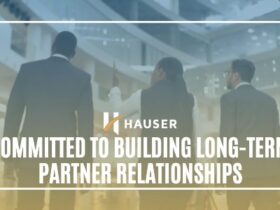Introduction
According to Mark Roemer Oakland, shipping containers can serve a wide range of purposes such as for transportation of cargo, creation of mini homes, office spaces, guest houses, gardens, and more. Thus, it is important to clearly understand your use case in order to select a proper shipping container.
Tips & Tricks
Here are a few tips you can follow to buy a shipping container:
- Decide whether you should lease or purchase a shipping container – The first thing that you should consider is whether you should purchase or lease a container. Generally, it is only beneficial to purchase containers if you require them in large qualities, need to use them frequently, or need them for a long time. On the other hand, if you require only a handful of containers for a short period or only on certain occasions, leasing is a better option.
Purchasing containers is cheaper for a longer period but more expensive short-term and vice-versa is true for leasing. However, you need to pay high-interest rates for leasing containers whereas you have to pay money for maintenance and storage when you purchase containers.
- Choose the grading and condition of the shipping container – There is no universal grading system for shipping containers and things can get a little complicated if you don’t have any idea of what the different abbreviations mean. For instance, wind and watertight containers are labeled WWT whereas cargo-worthy containers are labeled as CW.
Online on-trip containers that have only been shipped from the manufacturer to the owner, CW containers are deemed suitable for the transportation of a cargo according to CSC criteria.
Other grading includes:
- F grade which simply means a new, food-grade container that can be used to ship food.
- B grade which means cargo-worthy containers
- A grade which means new refurbished or used containers.
- C grade which means wind and watertight or cargo-worthy 2 containers.
- Select the type of container you require – The next step is to decide the type of container you need based on your shipping needs. Common container types include the following:
- Standard containers
- High Cubes
- Open-top containers
- Reefer container
- Tank container
- Double door container
- Insulated container
- Side door container
- One-trip container
- Pallet wide
- Hardtop container
- Flat rack
Standard containers are between 20-40 ft. And, depending on the type of product that you want to ship such as medicine, food, chemicals, you have to choose specialty containers.
- Decide how to complete the purchase of the shipping container – You can purchase shipping containers through local brokers who can find the container you need via their regional network. However, in such cases, the pricing can be on the higher side due to a lack of transparency.
You can also purchase containers from online marketplaces that are tied to international trading networks. An advantage of purchasing containers online is that you can sort through and select different types of containers with ease and compare the prices by different sellers. Plus, it is also easier to communicate with the seller on an online platform whether they have a verified presence.
Conclusion
Mark Roemer Oakland suggests you consider using your container as a one-way container if you are planning to ship it empty. This would allow you to save money since the person who leased the container would pay for the one-time shipping of their cargo whereas you only have to pay the container fee.










